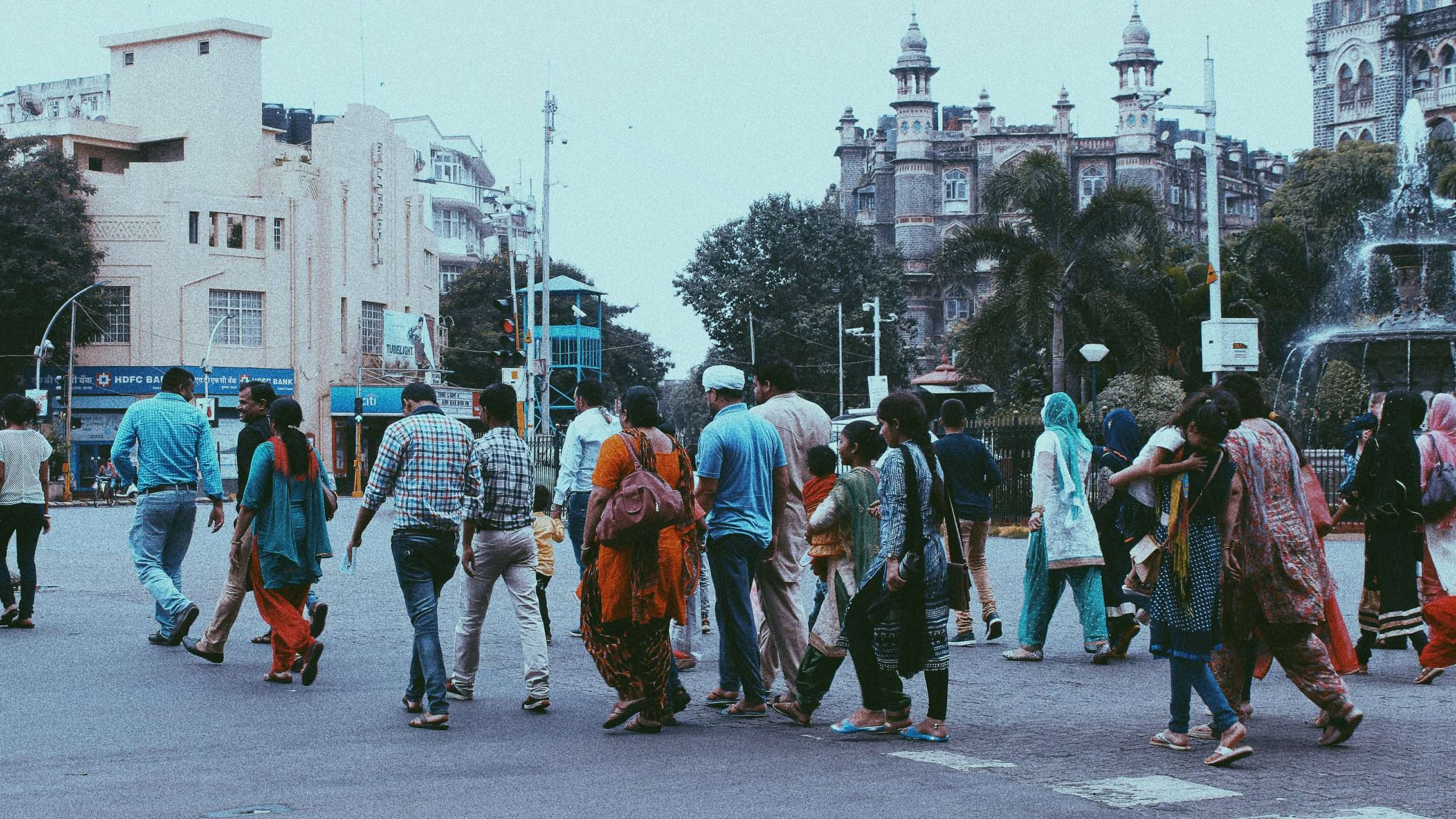Climate-change Induced Migration and Homelessness in Urban Spaces
Climate change refers to a significant change in the climatic patterns of rainfall, average temperature and conditions of the existing natural environment of a region. Increasing aridity and desertification, loss of biodiversity, increasing sea level, droughts, deadly heat waves, flooding and cyclones are the resultant effects of climate change, but what does migration research tell us about the impact of climate change on global migration?
Climate change is a manifestation of both gradual and sudden extreme climate events. Authors Rajan and Bagat in the book Climate Change, Vulnerability and Migration published in 2019 discusses how climate change occurs due to the long-term shift in the average weather conditions of a region accruing potential environmental stress over a period of time. The topic of this book ignites our discussion here related to social science and migration research.
Climate change have distinct sensitivities on human society through varied socio-economic, political, cultural and health impacts. Climate change, according to Intergovernmental Panel on Climate Change (IPCC) is a significant man-made global environmental challenge. Climate change has a major impact on human migration.
History of Environmental Changes and Migration Research
Historically, environmental changes and natural disasters are viewed as the push factors of migration. In the contemporary times, climate change is a major driver of human migration thereby increasing the potential environmental risks and vulnerabilities of communities. Both migrant-sending communities and migrant-receiving communities has to be studied in order to understand climate-change induced migrants as one of the most vulnerable groups that need to be protected. Climate change today is a major challenge to both Natural and Social Science intellectual discourses.
The knowledge base on rapid climate change is coalesced primarily driven from the Natural Science understanding of climate change. Social Science research on climate change is in its formative years and has not achieved a holistic development. Though, there is an availability of substantial empirical literature that discusses the social dimensions of climate change, there is a gap in Sociological research on Climate change integrating the human dimensions of climate change into the broader framework of socio-cultural and institutional dynamics.
Since, the inception of Inter-governmental Panel on Climate Change in 1988, data is collected and researched by many scientific disciplines to draw the causal factors, connections and impacts of climate change. However, one major reason for the existing gap in the Sociological research on Climate change is attributed to the fact that it is of very recent origin in early 1990s and requires the necessary research impetus to understand the nature, anthropogenic drivers and consequences of climate change.
Impacts of Climate Change on Human Populations
Human actions has increasingly manipulated the natural systems at a very rapid pace in this era of anthropocene. Though, climate change is a global environmental change, its effects are spread and felt regionally and locally. Experts and researchers working in this field first wrote about forced migration as the resultant social outcome of climate change in the 1970s and 1980s.
More extensive research in this area is required to explore how the environmental stressors manifest through socio-economic conditions. There is a need to conduct intensive Sociological research to establish the causal linkage between climate-change and migration. Climate change induced migration is also viewed as a livelihood strategy to mitigate the socio-economic crises arising due to the adverse impacts of climate change in the places of origin.
According to a study report details published in the online news platform ‘Down to Earth’ in 2019, the United Nations projection shows that a greater number of people will be displaced in India because of environmental stressors and disasters.
Situating Internal Migration and Climate-Change Induced Migration:
Johnson, C.A. and Krishnamurthy, K in the article, “Dealing with displacement: can ‘social protection’ facilitate long-term adaptation to climate change? ” published in 2010 and Kleemans, M in a paper presented on “Migration choice under risk and liquidity constraints” at the Agricultural & Applied Economics Association and Western Agricultural Economics Association Annual Meeting, San Francisco, CA in 2015 discuss that migration due to climate-related slow changes may be voluntary in prospect of better livelihood opportunities (economic migration), while extreme-weather events often cause forced displacement (distress migration).
Klein, R.J.T., and others in the article “Adaptation opportunities, constraints, and limits,” published in Climate Change: Impacts, Adaptation and Vulnerability, in 2014 wrote that in the context of climate change, distress migration is often a last resort “when adaptation efforts are unable to provide an acceptable level of security from risks.”
Connecting Climate Change and Migration Research
Establishing connections between climate change and migration (the nexus dynamic) is relatively a new area of research yet to be explored holistically. The need of the hour is to integrate human dimensions in the context of climate-change migration. The number of environmental migrants, potential environmental migrants in environmental risk prone areas, climate variability are different aspects that need to be studied in the research on climate-change induced migration.
The major complexity in the study of environmental migration is the isolation of environmental determinants causing migration. The environmental determinants are coupled with other factors that influence the migratory processes. The other factors that influence migration in the event of gradual or slow-onset of climate change and sudden climate change are occupation, seasonality, wage-rates, household assets, land-holdings, social network capital etc.
The Green Peace 2008 report shows the estimates of population in the states of India likely to face out-migration because of climate change and globalization indicating a ‘double-jeopardy’. For example, considering the state of Tamil Nadu in the country India, according to the report estimates, around 10 million migrants are expected to migrate out of Coastal Tamil Nadu by 2100. Tamil Nadu is projected as a vulnerable region likely to experience highest level of out-migration due to sea level rise and drought catalysed by the resultant effects of globalization.
Climate Change Induced Migration
Climate change induced migration refers to forced migration of groups of people from their home region due to sudden or long-term changes in their immediate and local bio-physical environment. Climate change induced migration results in internal displacement of groups and communities of people within the geographical boundaries of the state, nation-state or movement of people to different parts of the world because of the environmental stressor.
Climate change induced migration has gained widespread attention since the early 2000 by Sociologists and policy-makers due to the potential societal ramification of environmental changes. Climate change induced migration is associated with a cluster of sub-set categories such as environmental refugees, climate refugees, environmentally displaced persons, eco-refugees, disaster refugees to name a few. Climate change induced migration emerging out of the nexus between environmental and social variables causes homelessness among the migrants.
For example, in an interview study conducted by me from June 2018- December 2018 in the city of Chennai in Tamil Nadu,it was found that a considerable out-flow of people from drought-hit areas of Tamil Nadu such as coastal Nagapattinam, Tanjore, Salem into Chennai has occurred. This type of distress migration caused due to climate-change determinants resulted in a steady out-flow of migrants from migrant sending communities into major areas of urban Chennai and settled as homeless inhabitants in Velacherry and Taramani-Bypass Road.
Climate Change and Homelessness in Migration Research
Climate change induced migration in Tamil Nadu results in a condition of homelessness with their marginal identities being shaped by the interplay of migration, homelessness and gentrification of Chennai’s urban spaces. In a retrospective analysis of homelessness on the other hand, Stronge wrote in the article, Educating homeless students in urban settings. Education and Urban Society, published in 1993,that homelessness is an immensely complex and multidimensional social problem.
Homelessness is intricately linked to environmental factors. The issue merits an increased special attention here. It is rather not a simple construct instead it is a social construct that brings to fore the complex interactions between resultant increase in homelessness in urban gentrifying spaces due to adverse effects of climate-change induced migration.
The complexity of homelessness is further aggravated with the rapid increase in urban gentrification in Chennai. The term, Gentrification (was coined by the British Sociologist Ruth Glass), occurs in urban areas creating increased optimization of capital and profitable redevelopment for business elites at the expense of marginalized urban residents affected by unemployment, poverty, stigma, work instability.
Concluding Thoughts on Migration Research
From a social context, the need of the hour is to situate how climate-change induced internally displaced migrants face the challenges of aggravated homelessness and homeless to-be (which is a very fine fuzzy boundary) in gentrifying urban spaces.
The role of institutional arrangements shaping the social structure, the constraints and opportunities created by social structure of gentrifying urban spaces for the environmentally displaced homeless migrants who act as individual agency in particular social conditions to negotiate vulnerabilities, the exercise of agency by environmental migrants in the social context of environmental displacement and aversion of sustained homelessness due to climate change required an in-depth Sociological study.
Disposition towards central city living serves the need for capital accumulation, capitalist land markets, capitalist policies and institutional arrangement of private property and free-markets that favour the growth of urban middle-class and elite class at the expense of increasing catastrophes of homelessness. The increase in house- expense burden due to gentrification creates adverse homeless life conditions for environmental migrants thereby perpetuating their status as ‘environmental migrants, environmental refugees or climate change migrants.’
Migration invariably is associated with identity loss, formation of new identity and identity reconstruction and resurgence. Climate change induced migration and homelessness, conceptually illustrate the complex interplay of social variables in the wider socio-political, cultural and economic contexts. Marginal identities are socially constructed often by the social inequalities of power and authority during the social phenomena of migratory processes.
Marginalization of Climate-Change Migrants
The marginality of ‘climate-change migrants’ is compounded by the state of homelessness in urban spaces facing urban transitional changes such as gentrification. Hence, due to gaps in the existing research on climate-change migration, the nexus between climate-change and migration, homelessness as a resultant outcome of climate-change migration, the impact of rapid urbanization on the outcomes of climate-change migration, there is a compelling need to explore and study climate-change migration and homelessness in urban spaces as a rapidly growing social problem from a Sociological lens.







